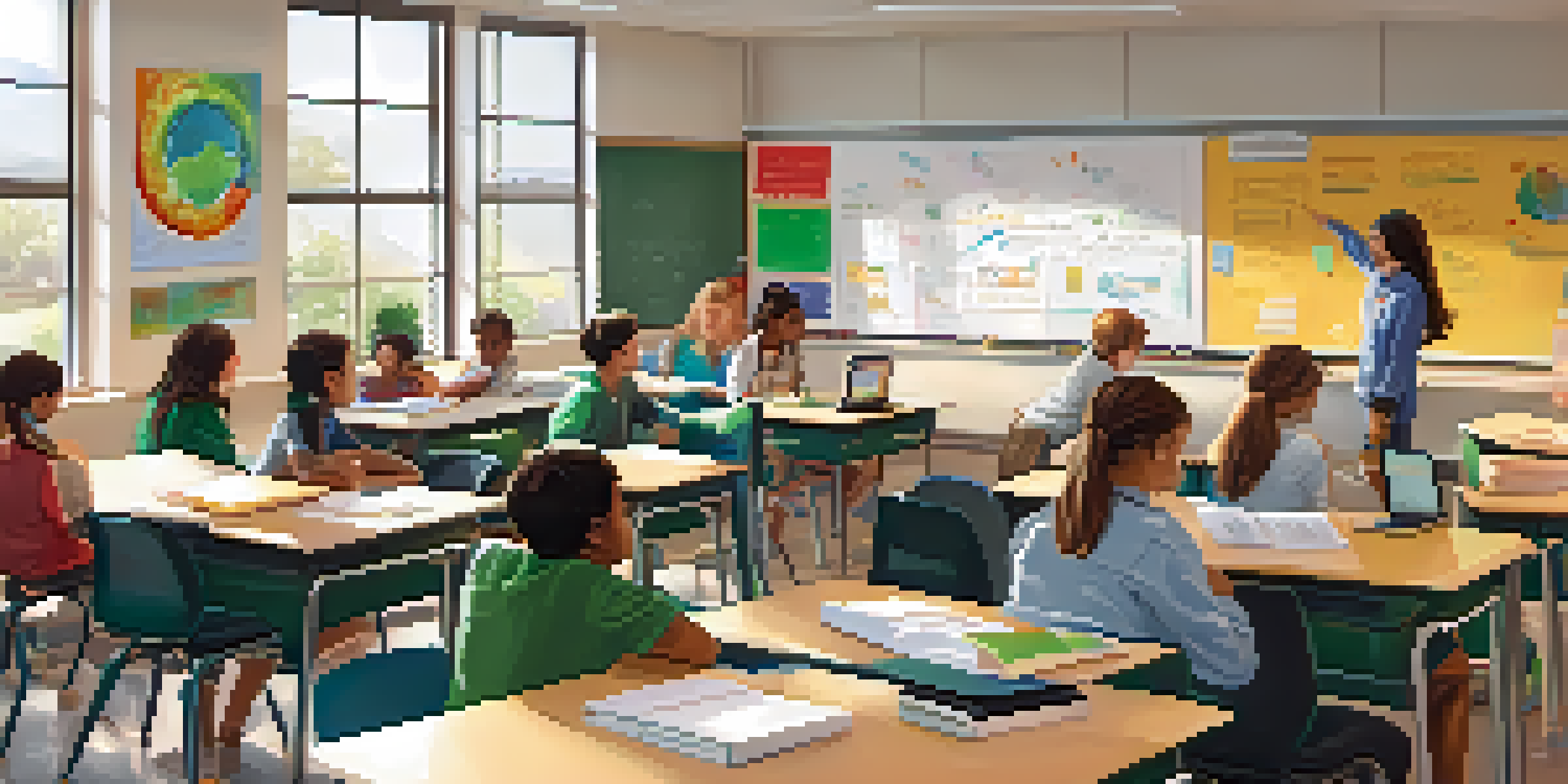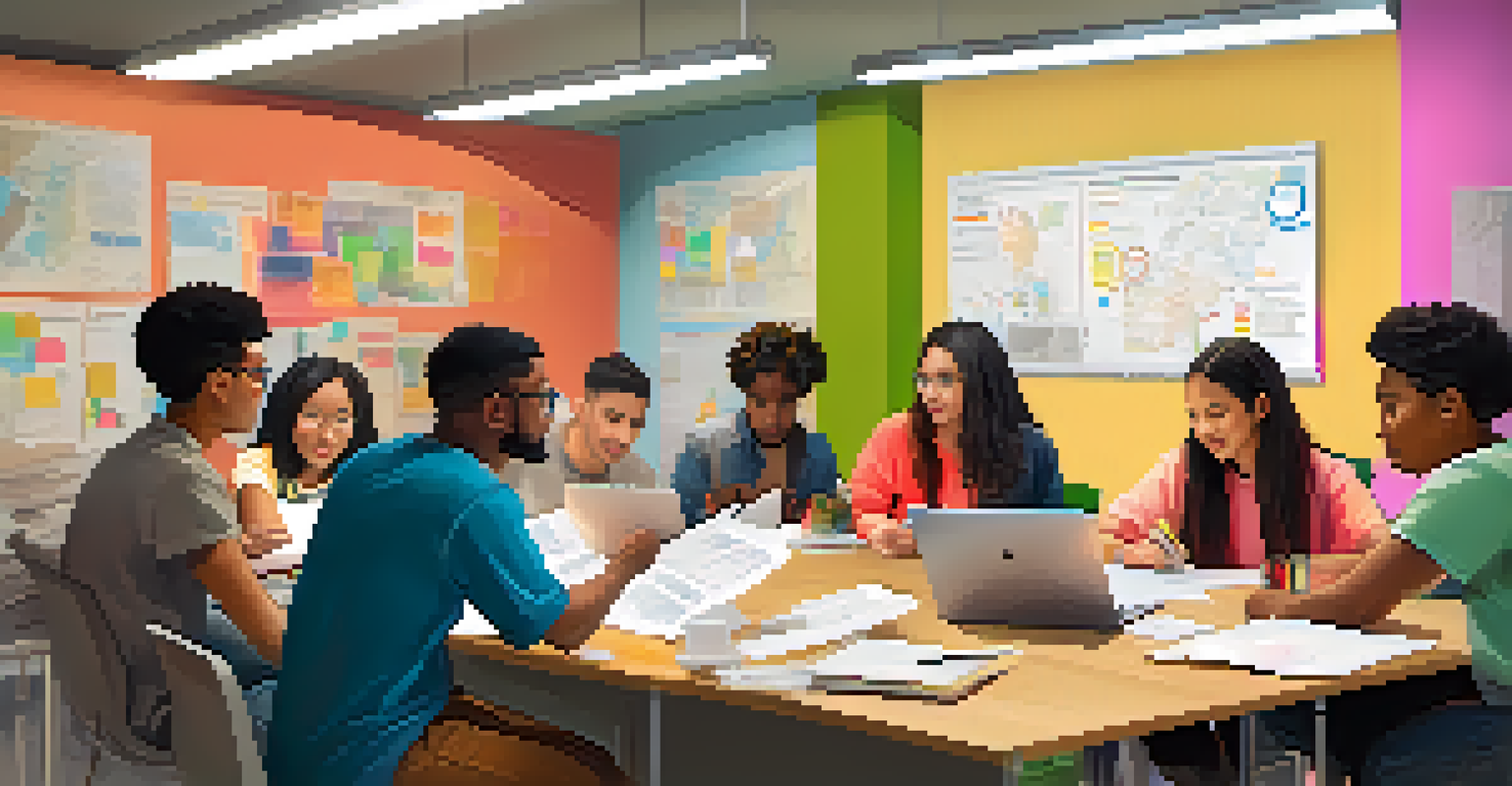Creating a Flexible Blended Learning Schedule

Understanding Blended Learning and Its Benefits
Blended learning combines traditional face-to-face instruction with online learning. This approach allows for flexibility in how students engage with material, catering to diverse learning styles. By integrating both methods, educators can create a more holistic educational experience that promotes active participation.
Blended learning is a mix of traditional and modern methods, allowing educators to reach every learner in a unique way.
One significant benefit of blended learning is its adaptability. Students can often choose when and where to complete their online components, leading to a more personalized learning experience. Additionally, this flexibility can contribute to better time management skills as students learn to balance their responsibilities effectively.
Moreover, blended learning fosters collaboration among peers and teachers. With both in-person and online interactions, students can engage in discussions and group work that enhance their understanding of the content. This collaborative environment not only builds community but also encourages deeper learning.
Assessing Your Learning Environment and Needs
Before creating a blended learning schedule, it’s crucial to assess your current learning environment. Take a close look at the resources available, such as technology, space, and materials. Understanding these elements will help you identify what adjustments are necessary to support a blended approach.

Next, consider the needs of your students. Each learner may have different preferences and challenges that affect their engagement and success. Conducting surveys or informal discussions can provide valuable insights into their needs, which can guide your scheduling decisions.
Blended Learning Enhances Flexibility
This approach allows students to engage with materials at their own pace, accommodating diverse learning styles.
Lastly, evaluate the goals of your blended learning program. Are you aiming to enhance student engagement, improve outcomes, or offer more flexibility? Clearly defining your objectives will help shape a schedule that aligns with both the curriculum and your students' needs.
Incorporating Flexible Scheduling Techniques
A flexible blended learning schedule allows for various pacing options. Consider implementing asynchronous online modules where students can complete tasks on their own time, allowing them to learn at their own speed. This approach can reduce stress and accommodate different learning styles.
The best way to predict the future is to create it, especially in education where innovation is key.
Another effective technique is offering 'flex days.' These are designated days where students can focus on independent projects or catch up on course material. This not only provides them with more control over their learning but also encourages responsibility and self-management.
Finally, use technology to your advantage by utilizing scheduling tools that can help both you and your students keep track of deadlines and tasks. Digital calendars, reminders, and planning apps can streamline communication and ensure everyone remains on the same page.
Designing Engaging Online Content for Learners
Creating engaging online content is essential for maintaining student interest in a blended learning environment. Use multimedia elements like videos, podcasts, and interactive quizzes to make lessons more dynamic. These resources can cater to various learning preferences and keep students motivated.
Additionally, consider incorporating real-world applications of the material. By connecting lessons to students’ interests or current events, you can enhance relevance and encourage deeper engagement. When learners see the practical implications of their studies, they are often more invested in the learning process.
Assessing Needs Shapes Learning
Evaluating the learning environment and student preferences is crucial for designing an effective blended learning schedule.
Lastly, ensure that your online content is user-friendly. Clear instructions, intuitive navigation, and accessible formats are crucial for a positive learning experience. When students can easily find what they need, they can focus more on learning and less on troubleshooting.
Establishing Clear Communication Channels
Effective communication is key in a blended learning model. Establish clear channels for students to ask questions, share feedback, and collaborate with peers. Whether through discussion boards, email, or messaging apps, making sure students know how to reach out can enhance their learning experience.
Regular check-ins are also vital for maintaining communication. Schedule consistent times for one-on-one or group meetings to discuss progress and address any challenges. This helps build relationships and ensures students feel supported throughout their learning journey.
Finally, encourage students to take ownership of their communication. Teach them how to articulate their needs and provide constructive feedback, fostering a sense of agency. When students are involved in the communication process, they are more likely to engage actively in their learning.
Implementing Assessment and Feedback Mechanisms
Assessment in a blended learning environment should be ongoing and varied. Incorporate both formative assessments, like quizzes and reflections, and summative assessments, such as projects or presentations. This multi-faceted approach helps gauge student understanding and informs future instruction.
Feedback is equally important in this context. Provide timely and constructive feedback on assignments to guide student improvement. Consider using digital tools that allow for quick comments and suggestions, making the feedback process more efficient and engaging.
Continuous Improvement is Key
Fostering a culture of feedback and adaptation helps educators refine their blended learning practices over time.
Moreover, involve students in their assessment by encouraging self-assessment and peer reviews. This practice not only promotes accountability but also enhances critical thinking skills, as students learn to evaluate their work and that of their peers.
Creating a Culture of Continuous Improvement
As you implement a blended learning schedule, fostering a culture of continuous improvement is essential. Regularly solicit feedback from students about what’s working and what isn’t. This open dialogue can provide insights into necessary adjustments and help you refine your approach.
Additionally, stay updated on the latest trends and best practices in blended learning. Attend workshops, webinars, and conferences to learn from fellow educators and experts. Embracing new ideas can invigorate your teaching and keep your content fresh and engaging.

Finally, model a growth mindset for your students. Emphasize the importance of learning from mistakes and making adjustments along the way. By promoting this mindset, you encourage resilience and adaptability—skills that will benefit students in all areas of their lives.